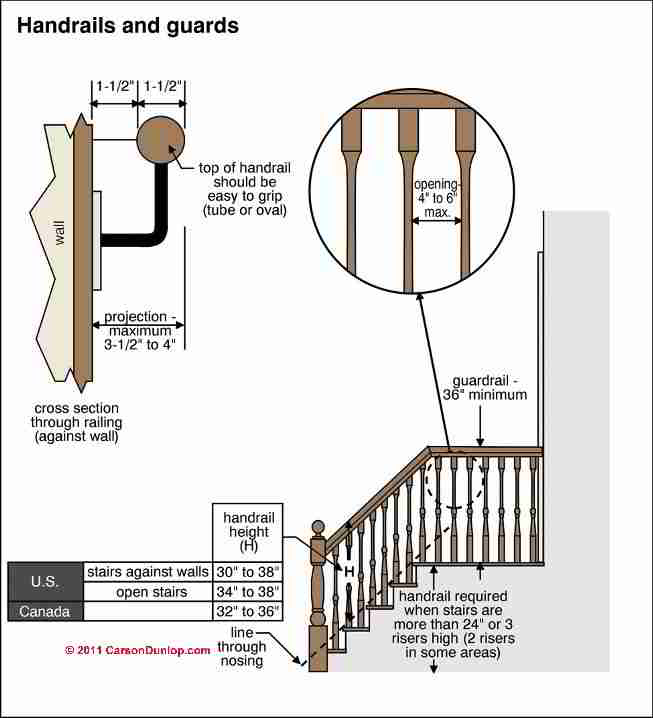

Concentrated Load Test: The top rail must be capable of holding a point load of 500 lbs.Uniform Load Test (for IBC applications): The top rail must be able to sustain 125 lbs./foot length of force applied horizontally or vertically.Infill Load Test: The strength of the balusters are tested so that a one-square foot area must resist 125 lbs.If you are using a circular cross section, then the handrail must have an outside diameter of between 1-1/4” and 2”.Įngineered railing systems must be tested and certified to meet IRC and IBC building codes. Flat 2x4 and 2圆 handrails do not meet the requirements for graspable handrails. A variety of gripping shapes may be acceptable but must meet requirements for the gripping surface. The handgrips must allow a minimum of 1-1/2” space between the handrail and the guardrail or wall. R311.7.11.1 Treads of alternating tread devices. Handrail ends must be returned and terminated at rail posts. The clear width at and below the handrails shall be not less than 20 inches (508 mm). The top edge of the handrail must be placed between 34” and 38” above the nosing of the stair treads. Handrails are required for stairs in many applications and must meet standards as specified by R311.5.6.3 in the IRC code. The sweep space between the deck surface and the bottom rail must be less than 4". To achieve this, you should check to make sure you meet the post spacing requirements for the type of posts you are using and how they are attached to the deck. There is also a safety factor required by the code, so testing loads are higher for manufactured railing systems.

force anywhere along the top of the rail. Extensions shall return to a wall, guard, or the landing surface, or shall be continuous to the handrail of an adjacent stair flight. At the top of a stair flight, handrails shall extend horizontally above the landing for 12 inches (305 mm) minimum beginning directly above the first riser nosing. Headroom of not less than 6’-6 shall be provided. 505.10.2 Handrail Top Extension at Stairs. FOR NON-RESIDENTIAL OCCUPANCIES SEE CALIFORNIA BUILDING CODE, CHAPTER 10 STAIRWAYS REQUIRED WIDTH OF RUN SHALL BE PROVIDED IN THE WALKLINE (10 MIN) Note: Handrails not shown for clarity Note: 1.

The guardrails must be strong enough to withstand a concentrated 200 lb. RESIDENTIAL STAIRWAYS & HANDRAILS BASED ON THE 2010 CALIFORNIA RESIDENTIAL CODE, R311.7. In the case of guardrails for stairs, there is an exception that allows up to a 6” diameter sphere through the triangle opening formed by the stair riser, stairtread and bottom rail. A variety of styles are allowed as long as the interior sections of the rail don’t possess any openings large enough to pass a 4” diameter sphere through.


 0 kommentar(er)
0 kommentar(er)
